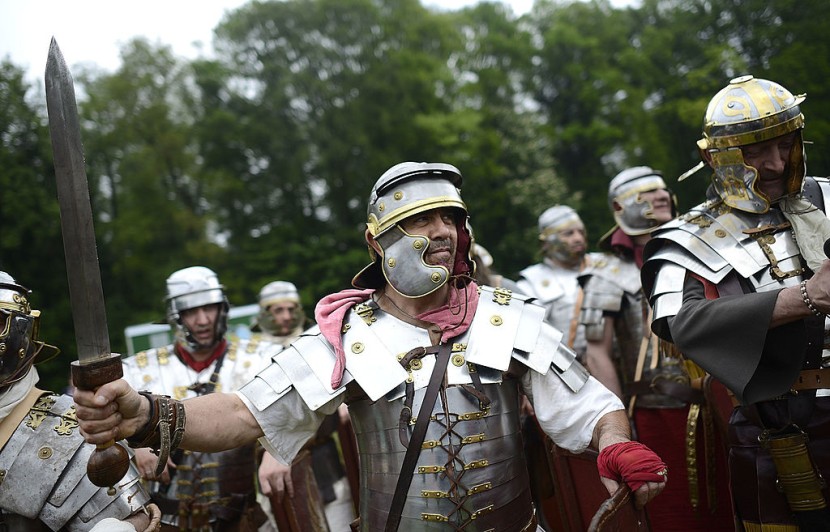
Archaeologists have discovered four perfectly-preserved 1,900-year-old Roman swords in a cave in the Judean Desert, which experts believe were captured by Jewish rebels during the Bar Kokhba (or Second Jewish) revolt and placed in a narrow crevice overlooking the Dead Sea.
According to Israel Antiquities Authority's (IAA) Judean Desert Survey director Dr. Eitan Klein, the find near Ein Gedi National Park, near the Dead Sea, was "extremely rare" and such a find was unprecedented in Israeli history.
The cave was already well-known to archaeologists, as it contained a stalactite with a fragmentary ink inscription written in ancient Hebrew script characteristic of the First Temple period.
"Four swords amazingly preserved, including the fine condition of the metal, the handles, and the scabbards," Klein detailed the weapons found and their conditions.
The preliminary article on the swords is published in the volume "New Studies in the Archaeology of the Judean Desert: Collected Papers," which explored new archaeological finds discovered in the Judean Desert Survey Project, The Times of Israel reported.
A conference launching the book is taking place Wednesday (September 6) in Jerusalem.
Roman Swords in a Jewish Cave
When Dr. Asaf Gayer of Ariel University, geologist Boaz Langford of Hebrew University, and Israel Antiquities Authority photographer Shai Halevi returned to the cave to photograph the stalactite with multispectral photography to decipher additional parts of the discovered inscription not visible to the naked eye, they spotted an extremely well-preserved Roman pilum, a spear-javelin hybrid weapon the Romans used as projectiles prior to charging into enemy positions, in a deep, narrow crack in the rock.
Aside from the swords and spears, the scientists have also found pieces of carved wood in an adjacent niche, which turned out to be parts of the sword's scabbards, as well as pieces of wood and leather.
Archaeologists said three of the swords still have blades inside their scabbards. They likely belonged to Roman soldiers and were stolen by Judean rebels who hid them in a cave either for later use or to avoid being caught with them.
"The blades have been preserved so well, they look like they could be picked up and used right now, even 2,000 years after they were forged," Langford said. "You just realize that you are touching history, because here you are touching a find whose story you know."
Klein added the find was a "very rare and unique find" on an international level that would "shed light on the last moments of the war."
How Did the Swords Survive the Elements?
Another director of the IAA, Eli Escusido, was quoted by the BBC saying that the dry desert climate around the Dead Sea, the lowest point on Earth, enabled the preservation of artifacts that would not survive elsewhere in Israel.
"This is a unique time capsule, whereby fragments of scrolls, coins from the Jewish Revolt, leather sandals, and now even swords in their scabbards, sharp as if they had only just been hidden away today," he added.
The Bar Kokhba revolt, which lasted from 132 to 135 AD, was a Jewish rebellion against the Roman Empire and its rule over Judea led by a certain Simon Bar Kokhba.
© 2025 HNGN, All rights reserved. Do not reproduce without permission.








